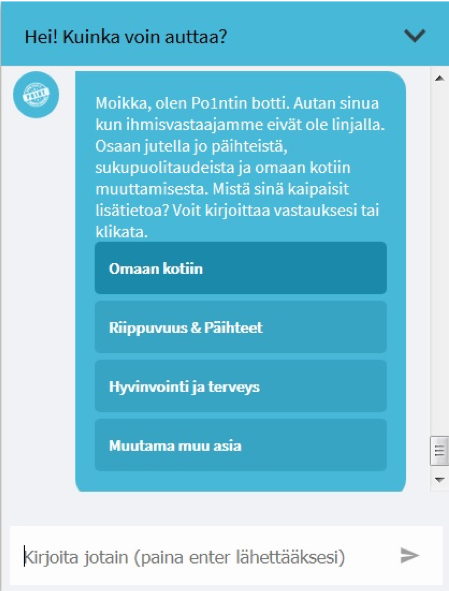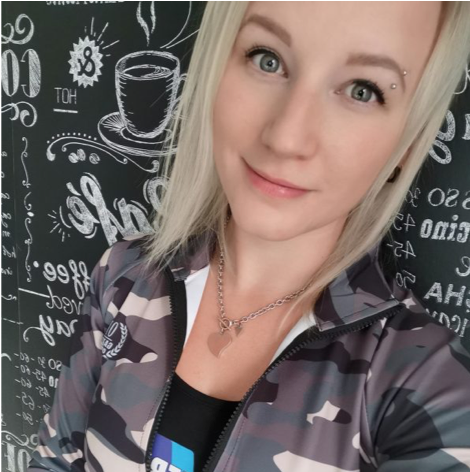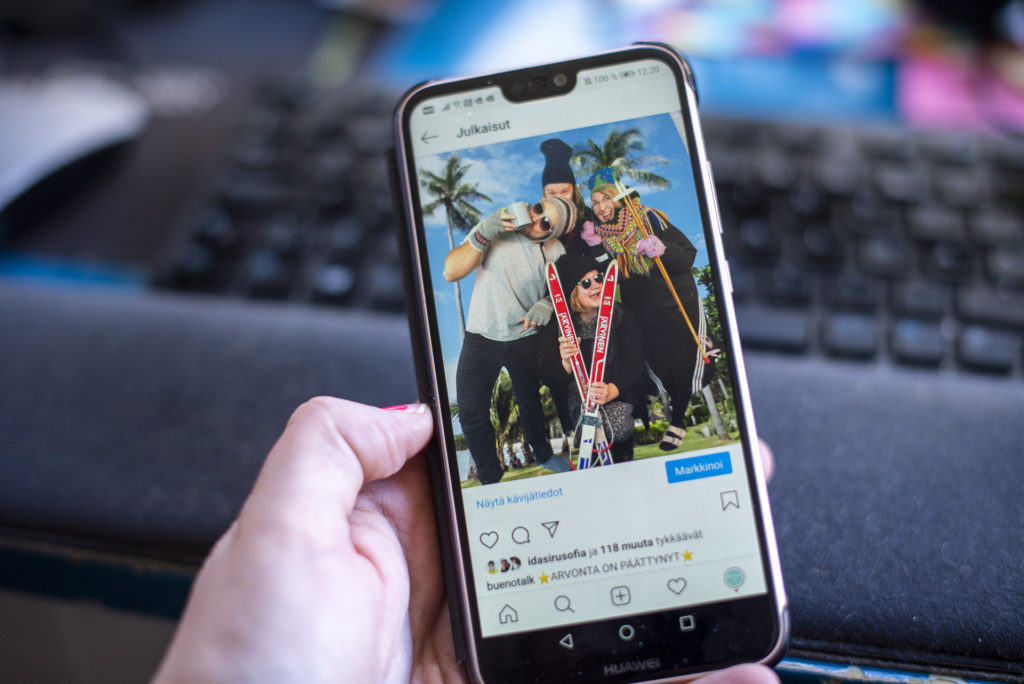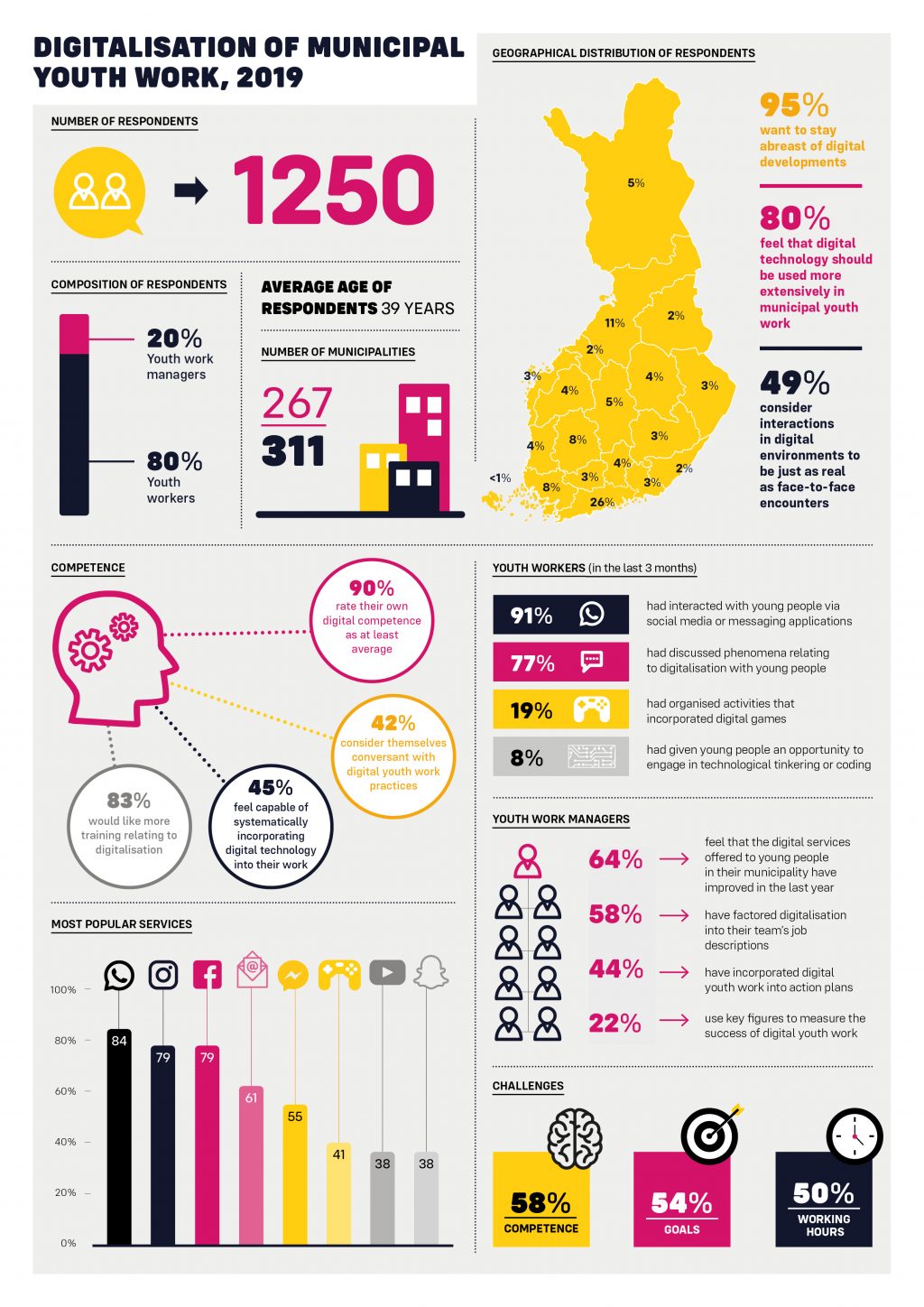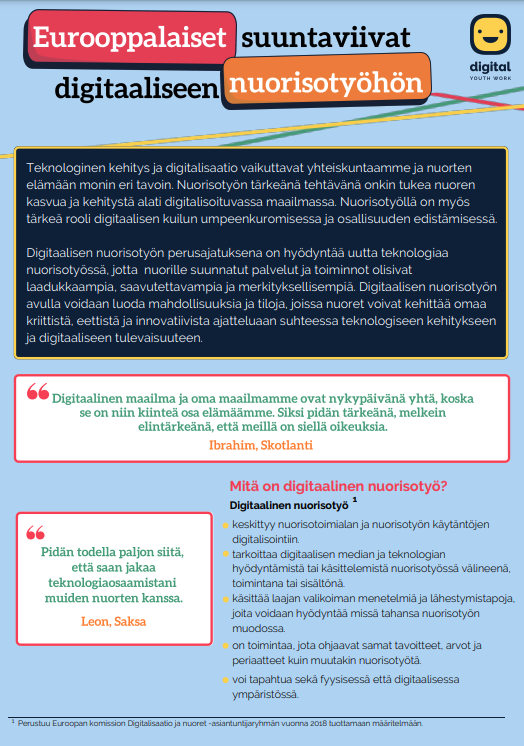Building a chatbot for the provision of information and guidance to young people
At the beginning of 2018, the Po1nt youth portal launched a two-year project which, as described in the project plan, aimed to develop multimedia online services, including a system of chatbot and chat functionalities. The services enable communication through image, video, audio and text. One of the online services is an online homework assistance service that provides support in the transition phases.
What does a “normal” youth worker do when presented with such a plan and given two years to carry it out? With hindsight, I would say the past two years have been quite a learning journey! I say so from the perspective of both myself and the whole network – and perhaps on an even larger scale, on account of new information being spread across our national borders, as well.
Miina Morko, the Po1nt coordinator at the time, was appointed project manager, and I became project planner. Our common journey, with its ambitious goals, began in February 2018. In the early stages, we were met with interest, doubt and even laughter at times. The project originally included a position for an IT expert, as well, but the idea was abandoned at the application phase. This meant that the two of us, both professionals in the social sector, got to learn about things that had not been discussed in the degree programme for community educators nor the degree programme in social services. At times, we called ourselves “the slightly nerdier youth workers”. We are interested in digitalisation and digital youth work and have the courage to experiment with new things. We inevitably gained new skills and knowledge during the project.
What is a chatbot and what kind of a chatbot do we need?
During the first spring, we collected information about the general nature of chatbots and artificial intelligence and discussed the kind of a bot we wanted to have at Po1nt. The network, project steering group and Po1nt youth council helped to specify the content. The project budget obviously set its own restrictions. Competitive tendering was not an easy task, since we first had to decide what exactly we wanted. For a project such as ours, I believe the first step should be to carry out a survey to determine what you want, whether it is feasible and what it will cost.
First, we set out to find a simple chat and planned to later look for a suitable bot application. In the end, we found what we really needed once we invited tenders for a combination of chat and chatbot. The price range of the tenders we received was tens of thousands of euros. What else could we do but get in a purchasing frame of mind and start choosing! We compared, assessed and discussed the various options and finally opted for a combination that led to Po1nt launching a Smilee live chat in October 2018, in which we would later integrate a Google DialogFlow chatbot with compatible interfaces.
Cooperation across municipal and professional boundaries
The chatbot’s content was put together at co-creation events, where we engaged in multi-disciplinary cooperation. Each of the co-creation events lasted for one full workday and brought together professionals working with young people in fields such as healthcare, employment services and youth services. We cooperated with other local projects in the youth sector, as well as with the Ohjaamo guidance centres for young people, the Nuorten Palvelu youth organisation, Setlementti Puijola, a settlement association, and the Youth Housing Association NAL.
At the co-creation events, the participants acquainted themselves with Po1nt, online guidance and bots. We used the Learning Cafe method to introduce the participants to the topics by discussing the pros and cons of online guidance, young people’s needs for information, and the existing service network catering to these needs. After this, the participants worked in pairs or small groups structuring information into a format that could be entered into the DialogFlow bot application as electronic service paths. The information processed at each of the co-creation events was compiled into a Google Docs document, and I, in my role as project planner, then transferred the information into the bot.
[image] The information pool of the Po1nt bot grew after each multi-professional co-creation event.
The professionals possessed the information, but now they had to divide it into chapters and headings and figure out how to make the text as readable as possible. The texts cannot be very long, and the use of links should be avoided so that the updates to the bot link lists do not take up a lot of the coordinator’s time in the future. The information began to accumulate gradually, and we were able to test it on a demo page.
Young people tested the bot and steered development work
In the case of bots, and the services on the whole, it is important to listen to future users, in this case, to young people. While the project was running, we set up a Po1nt youth council to which every Po1nt municipality was allowed to send 3–5 young members. We ended up with a group of 30 or so youngsters who tested the services throughout the project. We even had time to organise two camps with the youth council, and, based on the young people’s wishes, will continue the activities after the project conclusion.
[image] The Po1nt youth council at a joint camp in 2018.
The young people tested the bot on the demo page and gave feedback on it. According to them, a clickable bot worked well, but if you tried to write something to the bot, it did not necessarily understand a thing. Our young testers would have liked to see more artificial intelligence and natural language comprehension in the bot. They would have appreciated being able to talk about all things between heaven and earth. As for smileys, the testers felt there was no need for a machine to use them – it would seem rather weird.
We collected the youth council’s opinions approximately four times a year, in addition to the camps. We took all the feedback into account as best we could in our development efforts, but artificial intelligence, for one, is not yet part of our bot. We decided that the Po1nt bot only uses information that has been entered in it and has been verified and found to be trustworthy. In other words, the bot does not search for information online. This helps us ensure that the bot functions in accordance with our ethics.
Over the finishing line! But never ready…
The project was successfully completed, and the goals were reached in December 2019, as planned. We released the bot in November 2019 and had a chance to present it o an international audience at the 3 Networks Training seminar, organised on Mallorca for European professionals in information and guidance provision to young people. The two years passed faster than we could have expected. The new services created in the project are now in use at Po1nt.
Even though the bot has been released and capable of many things, its development is far from over yet due to the broad range of themes we set out to answer. It might be easier to create a bot to answer questions related to a single field, but information and guidance provision to young people presently covers twelve thematic areas (Nuortenelämä.fi), all of which are comprehensive in themselves. There is no need to enter all the available information in the bot.
In terms of artificial intelligence, the bot is still rudimentary. The simple fact that Google DialogFlow does not yet support the Finnish language causes additional work, which could be solved with artificial intelligence. For example, we manually enter synonyms and inflected forms for each search word to ensure that as many users as possible can find the appropriate path in the bot whatever words they use.
To further develop the bot, we will launch a new project in spring 2020, called DigitaaliSex, which will focus on developing themes related to sexuality in the bot. Questions about sexuality are one of the most frequent topics on the Po1nt live chat, which is why we decided to develop and expand related information in the bot.
Should you have any questions related to chatbots, don’t hesitate to contact me at milla.porkka@kuopio.fi
